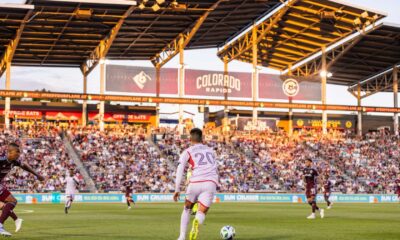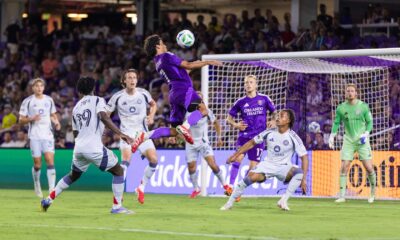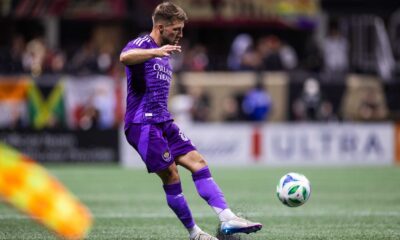Orlando City
Orlando City vs. New York Red Bulls, Round 2: Player Grades and Man of the Match

The Lions have been victimized on the counter-attack many times this inaugural Major League Soccer season. So it was highly satisfying to see Orlando City flip the tables and become the clinical team on the rush.
Carlos Rivas and Kaká kept feeding Cyle Larin and the Canadian international kept putting them in the back of the net. The five goals is a new club MLS record for a road game, breaking the old mark of three set at Chicago in June and equaled at New York City FC.
Here are my player grades from Orlando City’s third consecutive victory (feels good to say that):
Starters
GK, Tally Hall, 6.5 – Hall made three saves on the night and couldn’t do much about the two goals allowed, but I thought he had a chance to get to a few more of those aerial balls that became more dangerous than they needed to be as a result of letting them go. Hall still had a fairly good game, but it wasn’t vintage Tally.
D, Luke Boden, 6 – A mixed night for Bodz, who was asked to shift into an unfamiliar position when Seb Hines was stretchered off. Had a bad early turnover at left back in the 21st but Hines bailed him out with a tackle of Lloyd Sam in the box. Completely lost track of Sam on the second goal. Aside from that, it was a hard-fought shift from Boden who was calm on the ball and looked to clear his lines whenever possible.
D, Aurelien Collin, 7 – Big No. 78 had his hands full marking New York’s attack but he did an admirable job. Was very calm and tried to keep the back line organized with Hines early on and later with Boden next to him. It would have been very easy for the makeshift back line to get disorganized but Collin didn’t let that happen. He was a leader in the back, with the most touches, clearances and interceptions of the back four.
D, Seb Hines, 7 – An unfortunately short night for Hines, who was carried off the pitch after New York scored off a set piece. He was caught in a collision between two attackers and went down hard on his shoulder. While on the pitch, Hines was solid and snuffed out a Lloyd Sam attack in the box in the 21st minute after Boden’s turnover. Completed 82% of his passes and had three long balls in his 33 minutes.
D, Rafael Ramos, 7.5 – Four clearances, three blocked shots and two interceptions for Rafa, who kept Mike Grella relatively quiet and held his ground when one-on-one out wide. Used his speed well defensively. A few misplaced passes and a lack of offensive threat keep his score from being even higher.
MF, Cristian Higuita, 8 – Showed incredible hustle after having a shot blocked in the 43rd minute, tracking all the way back to help with a tackle just above his own penalty area to start the sequence that resulted in Cyle Larin’s second goal. Will unfortunately miss the Montreal match after picking up a yellow card on a mis-timed tackle attempt from behind Sacha Kljestan in the 28th. Higuita just continues to impress, with four tackles, two interceptions and two clearances to go with 92.1% passing accuracy. Drew a game-high five fouls.
MF, Darwin Ceren, 7.5 – The El Salvadoran was all over the pitch. He got on the ball everywhere, making a team-high 51 passes and completing 86% of them. Three interceptions and three clearances. I may be being picky, but I deducted half a point for a number of late decisions that kept him from either completing a pass or intercepting one. Could just be a matter of getting his timing back after being out, but a solid night.
MF/LB, Brek Shea, 7 – Three games and three wins since Shea returned. Was forced to reprise his role at left back after Hines was subbed out for Carlos Rivas. Tied Collin with a team-high five interceptions with two clearances and a blocked shot. Started the play that resulted in Cyle Larin’s third goal with a gorgeous outlet to Rivas. Helped Orlando withstand a lot of pressure from Sam and Shaun Wright-Phillips.
MF, Kaká, 7.5 – The captain’s return was a good one. Aside from missing the net with his shot attempts (none of the four found the target), it was a solid game. Showed great hustle and leadership and was more active defensively than we’ve seen in awhile. Led the team with 94% passing accuracy and had a team-high five key passes, adding two assists — including a perfect service to Larin for the game’s first goal and a touch pass to Bryan Rochez for the final tally.
MF, Lewis Neal, 5.5 – Another typical Lewis Neal outing. Was a step slow to break up some of New York’s midfield play and didn’t do much terribly dangerous on the offensive end, although he did put himself in a good spot in the 48th for a Cyle Larin cross but a deflection allowed Robles to collect it.
F, Cyle Larin, 8.5 (MOTM) – The Canadian scored a hat trick and forced a Damien Perrinelle own-goal with his presence. Three shots, three goals. That’s clinical finishing and he mostly made the right runs with the exception of one time with Kaká leading the break. Didn’t seem to have the rubber legs of the last match. Was a difference maker, completing 83% of his passes, made two key passes…oh, and set the MLS rookie goal scoring mark in style, becoming the first player in league history to net two hat tricks his rookie year.
Substitutes
LW, Carlos Rivas (34′), 8 – It wasn’t a perfect night for the Colombian, who finished the night with two brilliant assists plus the cross that forced the own goal by Damien Perrinelle. He was a deadly force on Orlando City’s counter attack, but he continues to rush his shots (shooting from too far away on one occasion when he could have been in all alone on Luis Robles) or right at the goalkeeper. He also made a few rash challenges and had at least one cheap giveaway. Still, he was such a menace offensively that we’ll forgive that tonight.
MF, Adrian Winter (65′), 5.5 – It was a tough 25 or so minutes for Winter, who squibbed a shot well high and played a few passes too late and got them intercepted as a result. Still, he worked hard during his shift and generally got in the way defensively as New York looked for a way back into the match.
MF, Bryan Rochez (76′), 8 – What an eventful 14 minutes for the Honduran U-20 star. Rochez came on and immediately got involved, getting behind Matt Miazga in the 77th and forcing the Red Bulls defender to grab him from behind, earning him a second yellow and a sending off. Was active in the counter attack and finished calmly in the 93rd minute to extend his goal-scoring streak to three games.
Polling Closed
| Player | Votes |
| Brek Shea | 16 |
| Carlos Rivas | 36 |
| Kaká | 25 |
| Cyle Larin | 162 |
| Cristian Higuita | 11 |
| Darwin Ceren | 9 |
| Aurelien Collin | 11 |
| Other (tell us who in the comments section) | 1 |
Opinion
Orlando City Has Been Better than Expected Halfway Through the Season
While there was plenty to worry about at the start of the season, Orlando has had a good first half of 2025.
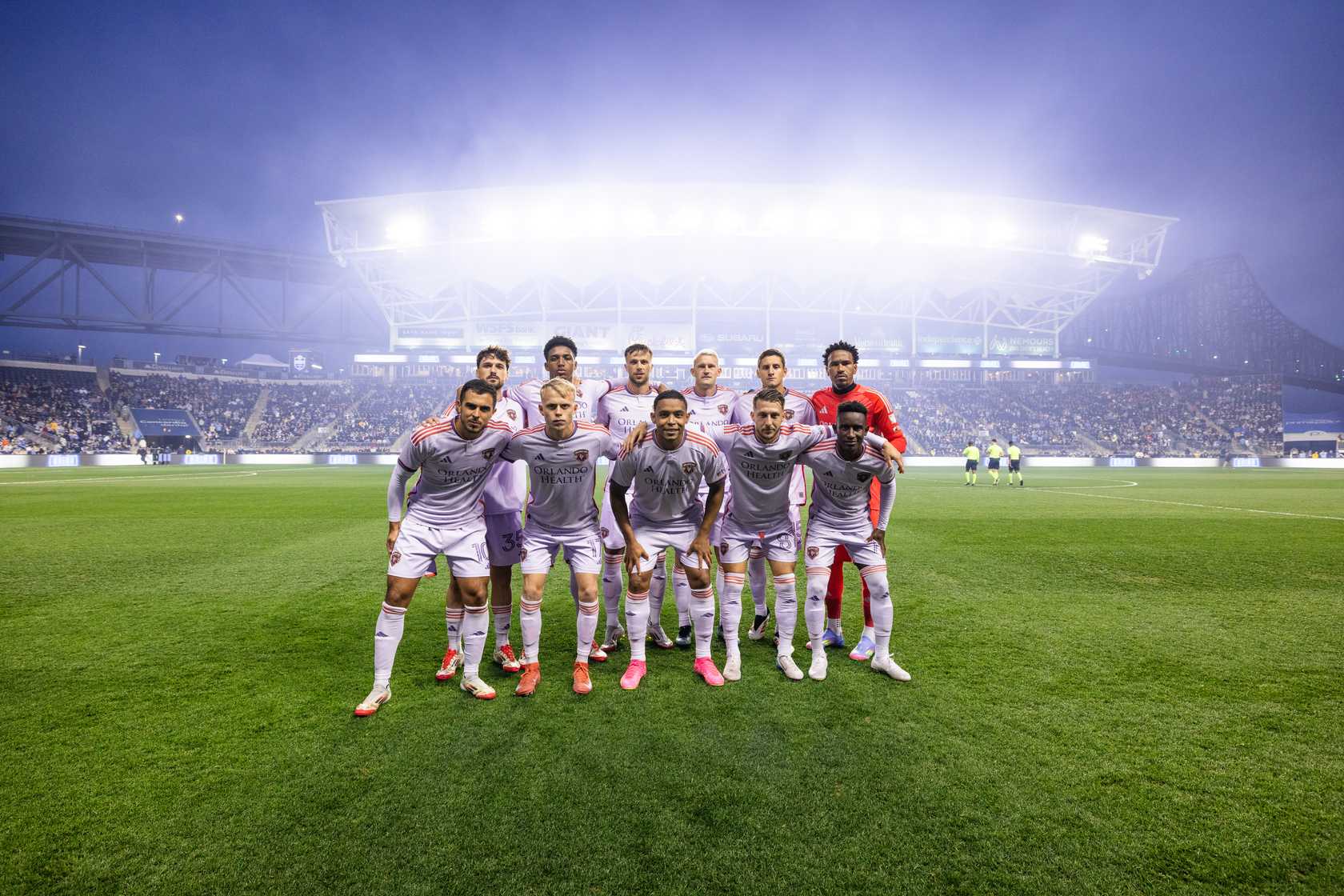
With 18 matches in the books, we’ve moved just past the halfway point of the 2025 Major League Soccer season, and based off my feelings before Orlando City played its opening game of the season, the Lions have performed above expectations so far. There were plenty of valid reasons to be concerned heading into the year. Orlando had sold its all-time leading goal scorer, and there were questions about whether he’d been adequately replaced. There were worries about depth at multiple positions, and the defense was coming off an uncharacteristically poor year. Here we are though, with the Lions sitting fifth in the Eastern Conference, just three points out of second place and seven points out of first. So how did we get to this point?
For one thing, Marco Pasalic has been much better than I (and I think a lot of other people) expected him to be. The Croatian has six goals and four assists across 18 matches, and is second on the team in both categories. He scored 10 goals in 49 appearances in the Croatian first division before coming to Orlando and was extremely one-footed, which was enough evidence to sow real doubt about whether he could adequately replace the impact of Facundo Torres.
So far, it’s mostly been so good. His direct style of play is a good complement to the styles of Martin Ojeda and Luis Muriel, and he’s largely hit the ground running in a league that can be difficult to adapt to. It hasn’t been perfect, as he’s still very one-footed, and can sometimes disappear if he’s stringently man marked, but on the whole there’s been much more good than bad.
Speaking of Ojeda and Muriel, they’ve also had strong years. Ojeda in particular has continued his great second half of the 2024 season and has nine goals and five assists in 18 games to show for it. He looks fast, confident, and decisive and is a far cry from the player who struggled frequently during his first year as a Lion. Muriel has cooled off a little after a scorching start to 2025, but he still has six goals and three assists in 18 matches. He looks vastly improved from last year, when he looked a little off the pace of play and quickly lost the starting striker role. He still has a tendency to not be as selfish as he needs to be in front of goal, but he’s been much better than 2024.
I mentioned depth being a big concern, and not just at one position. At the beginning of the season Orlando City was, and arguably still is, thin at striker, center back, defensive midfield, and fullback. Duncan McGuire was injured to start the year and is now injured again, leaving Orlando with two true strikers in Muriel and Ramiro Enrique. There was no true backup left back, only one reliable backup center back, and Dagur Dan Thorhallsson starting at right back meant that defensive midfield depth consisted of rookie Joran Gerbet and the Swiss army knife that is Kyle Smith.
Things have mostly worked out though. David Brekalo has supplanted Rafael Santos, meaning the Brazilian is now a proven backup option at the position, and Smith has filled in there as well. That means that in games in which Rodrigo Schlegel or Robin Jansson are unavailable, Brekalo fills in at center back, Santos starts at left back, and Smith is the backup for both positions, so it isn’t a flawless system. Gerbet has been playing better and better and got some valuable minutes when Eduard Atuesta and Cesar Araujo were unavailable. His emergence has been a crucial piece of the puzzle this year. So too has the rise of Alex Freeman, as his locking down the right back role has allowed Thorhallsson to fill in at defensive midfield, attacking midfield, and right back. The situation isn’t perfect, as a couple untimely injuries to the wrong guys would leave the Lions looking pretty threadbare, but so far it’s just about worked.
Another big concern was the defense. The Lions conceded 50 goals in the regular season last year, which was tied for the second-most of any Eastern Conference playoff team and fourth-most of any playoff team. With no defensive signings and the aforementioned depth concerns, there were plenty of reasons to worry about Orlando’s ability to keep the ball out of the back of the net.
Things have looked much better in 2025, though. The 22 goals OCSC has conceded are the fifth-fewest in the league, and Pedro Gallese’s eight clean sheets are tied for most in the league. Aside from a few egregious defensive performances against the Philadelphia Union, Atlanta United, and the Chicago Fire, things have mostly been tidy at the back, and when they haven’t been, El Pulpo has been around to pick up the slack. Again, things haven’t been perfect, as there have been moments where individual and collective errors have hurt the team, but it’s been better.
I thought the Lions would struggle this year. Going into the start of the season, we were talking about a team that lost Torres, arguably didn’t do enough to strengthen the team across the board, was facing depth issues, and was dealing with a leaky defense — all while pretty much every other contender in the East got stronger on paper. Instead, OCSC tied a club-best unbeaten streak and is just three points out of second place.
That being said, the East is so tight that Orlando is only five points above the playoff line, and injuries to the wrong guys could easily topple the fragile ecosystem that is the depth chart, but so far things are going better than I thought they would be. There are still a lot of matches to play, but this isn’t a bad position to be in at the halfway mark.
Lion Links
Lion Links: 6/20/25
Orlando Pride take on Racing Louisville FC tonight, Orlando Pride players called up by Zambia, USMNT beats Saudi Arabia, and more.
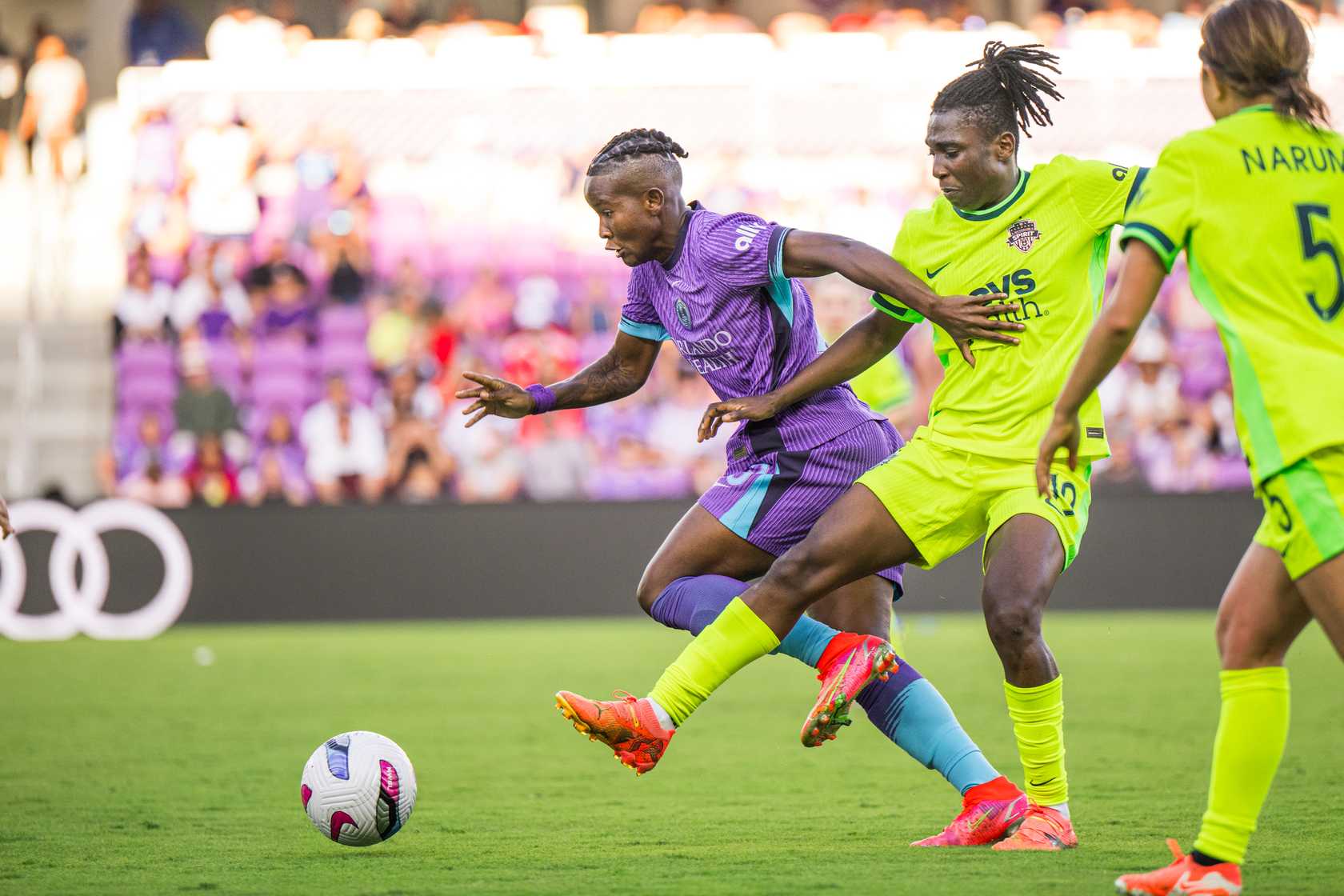
Happy Friday! June continues to fly by as we enjoy the buffet of soccer here in the U.S. this month. I’ll be spending most of the weekend working, but I am hoping to get some reading done after being gifted some books for my birthday. But enough about me, let’s jump right into today’s links!
Orlando Pride Face Racing Louisville Tonight
The Orlando Pride are on the road tonight for a match against Racing Louisville FC at 8 p.m. in the final game before a league break until August. Going into the break with four straight wins would be nice for the Pride, but they’ve struggled at Lynn Family Stadium over the years. Louisville enters this match following a 4-2 loss to the league-leading Kansas City Current and has scored eight goals over the past three games. Orlando’s defense has been phenomenal this year, conceding just eight goals this season and only one during this win streak. Midfielder Cori Dyke spoke on how the team is finding its groove and shutting out opponents.
Zambia Calls Up Orlando Pride Trio
Barbra Banda, Grace Chanda, and Prisca Chilufya were all called up for Zambia’s CAF Women’s Africa Cup of Nations roster ahead of this summer’s tournament. Banda has eight goals this season with the Pride and had four goals at last year’s Olympics, including a hat trick against Australia. The Copper Queens claimed third place in the 2022 edition of this tournament, and they’ll need to be at their best to win this summer against tough opponents like South Africa and Nigeria. Zambia’s tournament campaign will kick off on July 5 against the host nation, Morocco.
USMNT Beats Saudi Arabia to Qualify for Quarterfinals
The United States Men’s National Team won 1-0 against Saudi Arabia to clinch a spot in the quarterfinals of this year’s Concacaf Gold Cup. After a scoreless first half, the Yanks broke through in the 63rd minute thanks to a free kick. Sebastian Berhalter served the ball on a silver platter to Chris Richards, who buried it for the crucial goal. The defense did well to secure its second shutout of the tournament, with Orlando City’s Alex Freeman starting at right back yet again. The USMNT will play Haiti on Sunday and should be able to win the group for a smoother path in the knockout stage.
FIFA Club World Cup Roundup
An MLS club finally won a game during this year’s FIFA Club World Cup, with Inter Miami beating Porto 2-1 in Atlanta. Lionel Messi scored the winner from a free kick to complete the comeback after conceding an early goal. The Seattle Sounders had a rougher day, falling 3-1 to Atletico Madrid, with Pablo Barrios scoring a brace. Former Lion Facundo Torres started for Palmeiras in the Brazilian club’s 2-0 win over Egypt’s Al Ahly.
Today’s action features more soccer at Inter&Co Stadium, with Benfica and Auckland City squaring off in the City Beautiful. Our Michael Citro will be on hand to report on it. Elsewhere in the U.S., Chelsea will take on Flamengo, LAFC will face ES Tunis, and Bayern Munich will play Boca Juniors.
Free Kicks
- Canada Head Coach Jesse Marsch, who is already serving a suspension for misconduct during the Nations League, is under investigation by Concacaf for incidents during this Gold Cup. Reports detail that Marsch disregarded regulations and used offensive language toward match officials.
- Kylian Mbappe was discharged from the hospital after suffering from a case of gastroenteritis. It’s unclear if or when he’ll play for Real Madrid during the Club World Cup.
- Carlos Cuesta was hired as Parma’s next head coach after five years with Arsenal as an assistant coach. The 29-year-old becomes the second-youngest coach in Serie A history.
- Manchester City was fined over $1 million by the English Premier League for repeated delays regarding kickoff times.
That’s all I have for you all today. I hope you all have a fantastic Friday and rest of your weekend!
Orlando City
In 2025, OCSC Stands for Orlando City Scorers Club
How Orlando City’s top offensive performers this season compare to the rest of MLS…and the Premier League.
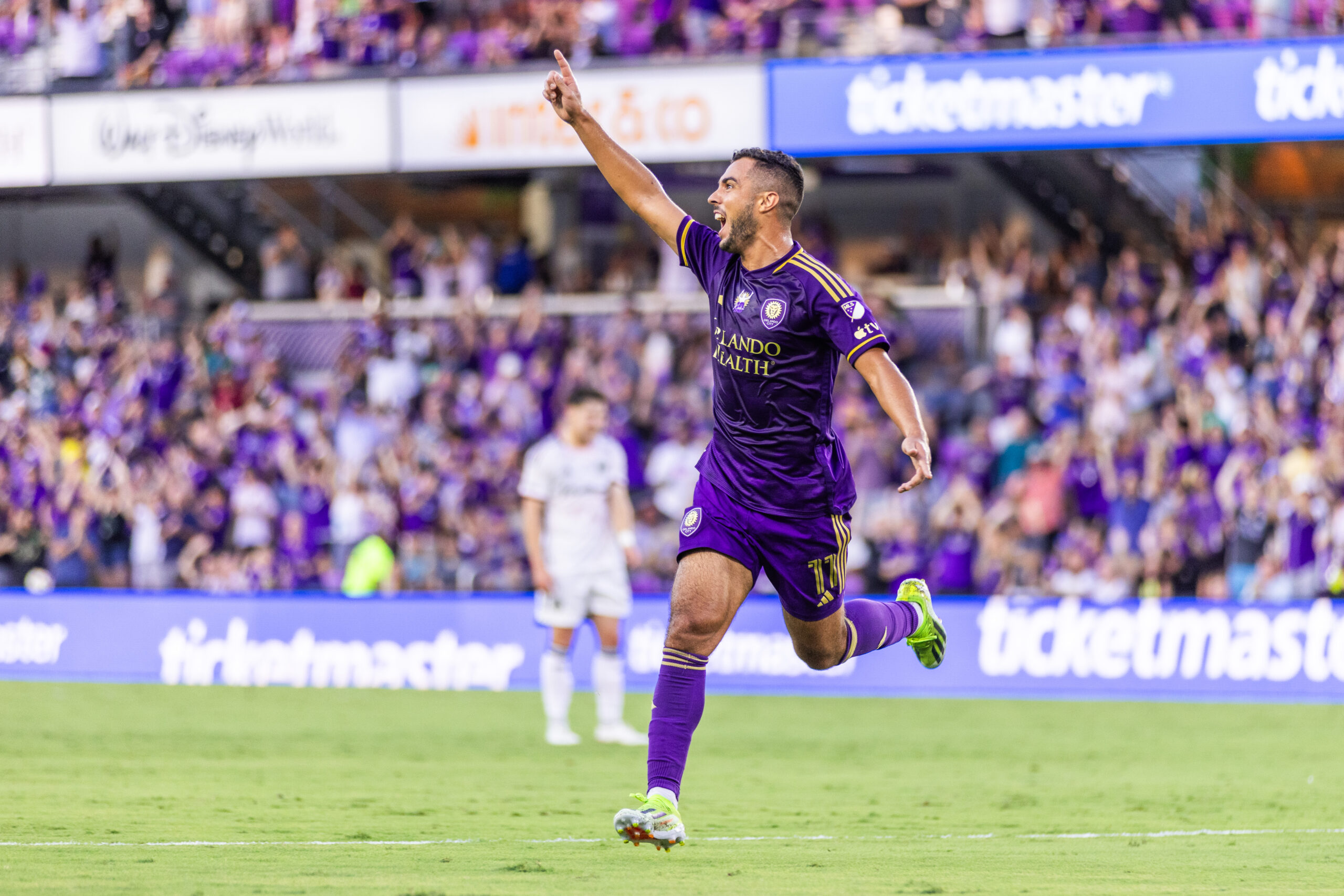
Last week, I wrote about the state of Orlando City at the halfway point of the season, focusing mostly on the team’s accomplishments on offense and defense through 17 games. For this week, let’s look at some of the top performing Lions, because it’s always fun to talk about offensive success. I do not apologize if you take offense to my desire to only focus on offense, because that would be defensive, and there is no place in this article for defense.
Many moons ago, back in January during the preseason, I wrote an article looking at the best offensive seasons in Orlando City’s MLS history. I used a derived metric called game score to rank the seasons, and I’ll quickly explain again how that is calculated:
Goals Scored + Expected Assists + 0.0113 (Progressive Carries + Progressive Passes)
I went into much more detail about why that is the calculation in the original article, but the quick and dirty version is that scoring goals, completing passes to players in dangerous scoring areas, and progressing the ball by dribbling and passing are core components of a strong offensive player. Think of the game score as an offensive value calculation, and think of it simply as a value for which more is better and the most is best.
Opta only tracked the last three contributing statistics (expected assists, progressive carries, and progressive passes) from 2018 onwards, and the chart below shows Orlando City’s 10 best MLS regular seasons since 2018. It also shows the season that currently ranks 11th — Martín Ojeda’s 2025 season, which, as a reminder, is only in game 18 of a 34-game regular season. This means, if you get the extrapolation machine out, Ojeda is on pace for a season-long game score of 26.5, which would rank as the highest full season game score in Orlando City history.
| Player | Season | Season Game Score | Rank in MLS | MLS Best that Season |
|---|---|---|---|---|
| Nani | 2019 | 22.0 | 8 | 50.7 |
| Facundo Torres | 2023 | 20.9 | 10 | 31.1 |
| Facundo Torres | 2024 | 20.0 | 21 | 32.6 |
| Facundo Torres | 2022 | 17.4 | 25 | 33.7 |
| Duncan McGuire | 2023 | 16.3 | 26 | 31.1 |
| Nani | 2021 | 16.2 | 26 | 26.6 |
| Sacha Kljestan | 2018 | 15.6 | 46 | 38.0 |
| Chris Mueller | 2020* | 14.8 | 11 | 21.8 |
| Yoshimar Yotún | 2018 | 14.7 | 53 | 38.0 |
| Dom Dwyer | 2018 | 14.3 | 58 | 38.0 |
| Martín Ojeda | 2025** | 14.1 | 4 | 16.8 |
- * The 2020 season contained only 23 games due to COVID-19
- ** Ojeda’s stats are through 18 matches; MLS teams have played between 16-19 matches
Ojeda’s 14.1 currently ranks only behind Sam Surridge of Nashville (15.7), Anders Dreyer of San Diego (16.6), and some player from Miami who clearly wants to play for Orlando since he has lion as part of his first name (Messi, 16.8). During Ojeda’s first two seasons, he only accumulated 12.1 and 12.5, respectively, so this is already by far his best season in purple and it is just barely halfway complete.
Ojeda is not the only Orlando City player who is on pace to jump into the club’s all-time top 10 by the end of the season, as teammates Luis Muriel (10.76, on pace for 20.3) and Marco Pašalić (10.46, on pace for 19.8) are both in the top 30 in MLS this season. Muriel is 24th, and Pašalić is 27th. Orlando City is the only team in the league with three players in the top 30, or really the top 27 (shout out to my son, for whom 27 is his favorite number).
One last point on Ojeda: if we were to extrapolate his performance through 18 games to 38 games, his season game score would bump up to 29.6. Why did I choose 38? Well, 38 happens to be the number of games played in the world’s most popular league, England’s Premier League. I am well aware that the Premier League is a different level of competition than MLS, but just for fun I ran the numbers on the 2024-2025 Premier League season, and a season-long game score of 29.6 would coincidentally also rank Ojeda fourth in England, right behind Cole Palmer (29.7) and in front of Alexander Isak (29.2). I do not think Ojeda would actually finish fourth if he was in the Premier League, but my point is more that the frequency of Ojeda’s contributions for Orlando City thus far this season have been similar to that of Palmer for Chelsea and Isak for Newcastle, which is pretty heady company.
Speaking of heady, we also need to talk about the player who is leading Orlando City in aerial duel wins, Alex Freeman. Heady, aerial duels…you got the segue, right? Don’t answer that.
Freeman has been on a rocket ship in the last year, going from Orlando City B starter to Orlando City starter to U.S. Men’s National Team starter, and he likely will also be the MLS All-Star Game starter, too. My mention of his leading the team in aerial duel wins, while noteworthy, was really just a convenient way to cut over to talking about him and his season-long game score of 8.1.
According to Opta’s positional tracking, only two MLS defenders have accumulated game scores of more than six thus far this season — Philadelphia’s Kai Wagner at 6.88 and Freeman’s 8.1. The extrapolation machine says 8.1 through 18 games puts Freeman on pace for a final score of 15.2, which would be the second best performance by an MLS defender since tracking began in 2018. Freeman is going to miss at least a few more games due to being with the U.S. team during the Gold Cup, so that 15.2 will likely not happen, but wow, what a great first half of a season for Orlando City’s right back.
Going back to the Premier League for comparative context…actually, please sit down and buckle up first. Are you good? Ok.
Going back to the Premier League for comparative context, there is none. Freeman’s performance blows away every defender’s from that league. It will likely surprise few that the defender with the best season game score in the Premier League this season was Trent Alexander-Arnold, who accumulated a score of 13.5 during Liverpool’s championship run. That 13.5 was 15% better than the defender who finished in second place, and yet, if we extrapolate Freeman to 38 games, he would be on pace for 17.0, which is 26% better than Alexander-Arnold. Mind the gap.
Once again, I do not mean to say that Freeman is as skilled or would contribute like Alexander-Arnold did in the Premier League. It is instead that Freeman’s contributions to Orlando City’s offense are unlike that from any defenders in the Premier League. Freeman’s performance thus far this season places him 43rd in the overall MLS rankings, first among defenders, and ahead of strikers such as Christian Benteke, Emmanuel Latte Lath, and Brandon Vazquez. He ranks fourth on Orlando City, and the Lions are not only the only club with three players in the top 30, but also the only club with four players in the top 45.
Two teams had four players in the top 45 during the 2024 MLS season, and one of them was the LA Galaxy, the eventual MLS Cup champions. I am not saying that Orlando City having four players in the top 45 this season means they will win MLS Cup, but I am not not saying it either. I am saying I would like it to happen though, and saying that loudly and clearly.
The game score metric is not the be-all, end-all of measuring offensive prowess, but I think it does a good job of creating a ranking system where the eye test matches the math. Most fans would point to Ojeda as the player who has driven Orlando City’s offense more than any other this season, and being that the team is on pace to have one of the best, if not the best, goal-scoring seasons in the club’s MLS history, it should track that Ojeda is also on pace to have one of the best, if not the best, individual offensive seasons in the club’s MLS history as well.
There are 16 more MLS games to go, and the great thing about sports is that in any game anything can happen, and that is why we love to watch. It is awesome that all three Designated Players and Freeman are off to great starts, but nothing is guaranteed for the back half of the season. That’s why they play the games, as the saying goes. For all we know, Ramiro Enrique could come on like gangbusters in the final games and rip off double-digit goals to end as the team’s leading scorer.
Ramiro, this is a bold strategy, and I am on board for it. The more goals the merrier. Feel free to bring us fans some goals for Christmas in July.
Orlando City does not have a game this weekend, with next match coming June 25 on the road in St. Louis. Winning that game would give the Lions their third winning streak of the season and would be something I would very much like, since I will be doling out the grades for that game. And since I have been writing about the offense this week, how about three goals and three points?
Vamos Orlando!
-

 Local Soccer Events4 days ago
Local Soccer Events4 days agoUlsan HD FC vs. Mamelodi Sundowns FC: Final Score 1-0 as South African Side Wins First FIFA Club World Cup Match in Orlando
-
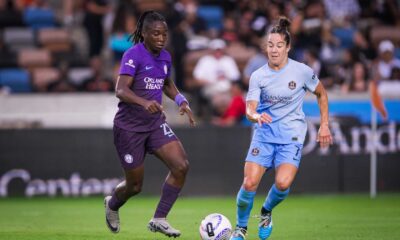
 Orlando Pride2 weeks ago
Orlando Pride2 weeks agoOrlando Pride vs. Houston Dash: Preview, How to Watch, TV Info, Live Stream, Lineups, Match Thread, and More
-
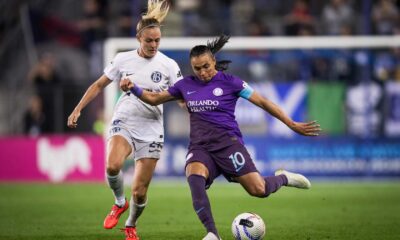
 Orlando Pride1 week ago
Orlando Pride1 week agoOrlando Pride vs. Bay FC: Preview, How to Watch, TV Info, Live Stream, Lineups, Match Thread, and More
-
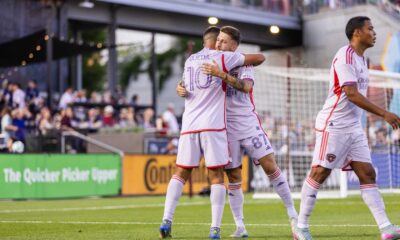
 Orlando City1 week ago
Orlando City1 week agoOrlando City vs. Colorado Rapids: Final Score 1-0 as Ojeda’s Goal Snatches Road Win for Lions
-

 Orlando Pride2 weeks ago
Orlando Pride2 weeks agoOrlando Pride vs. Houston Dash: Final Score 1-0 as Cori Dyke’s Goal at the Death Lifts Pride
-

 Orlando Pride2 days ago
Orlando Pride2 days agoOrlando Pride vs. Racing Louisville FC: Preview, How to Watch, TV Info, Live Stream, Lineups, Match Thread, and More
-
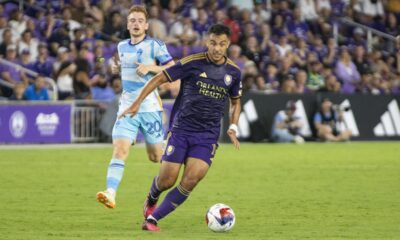
 Orlando City1 week ago
Orlando City1 week agoOrlando City vs. Colorado Rapids: Preview, How to Watch, TV Info, Live Stream, Lineups, Match Thread, and More
-
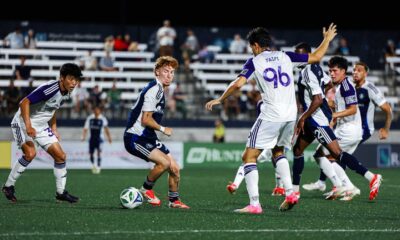
 Podcasts2 weeks ago
Podcasts2 weeks agoPawedCast Episode 484: OCB Beats Huntsville, Alex Freeman’s USMNT Debut, Colorado Preview, and More


